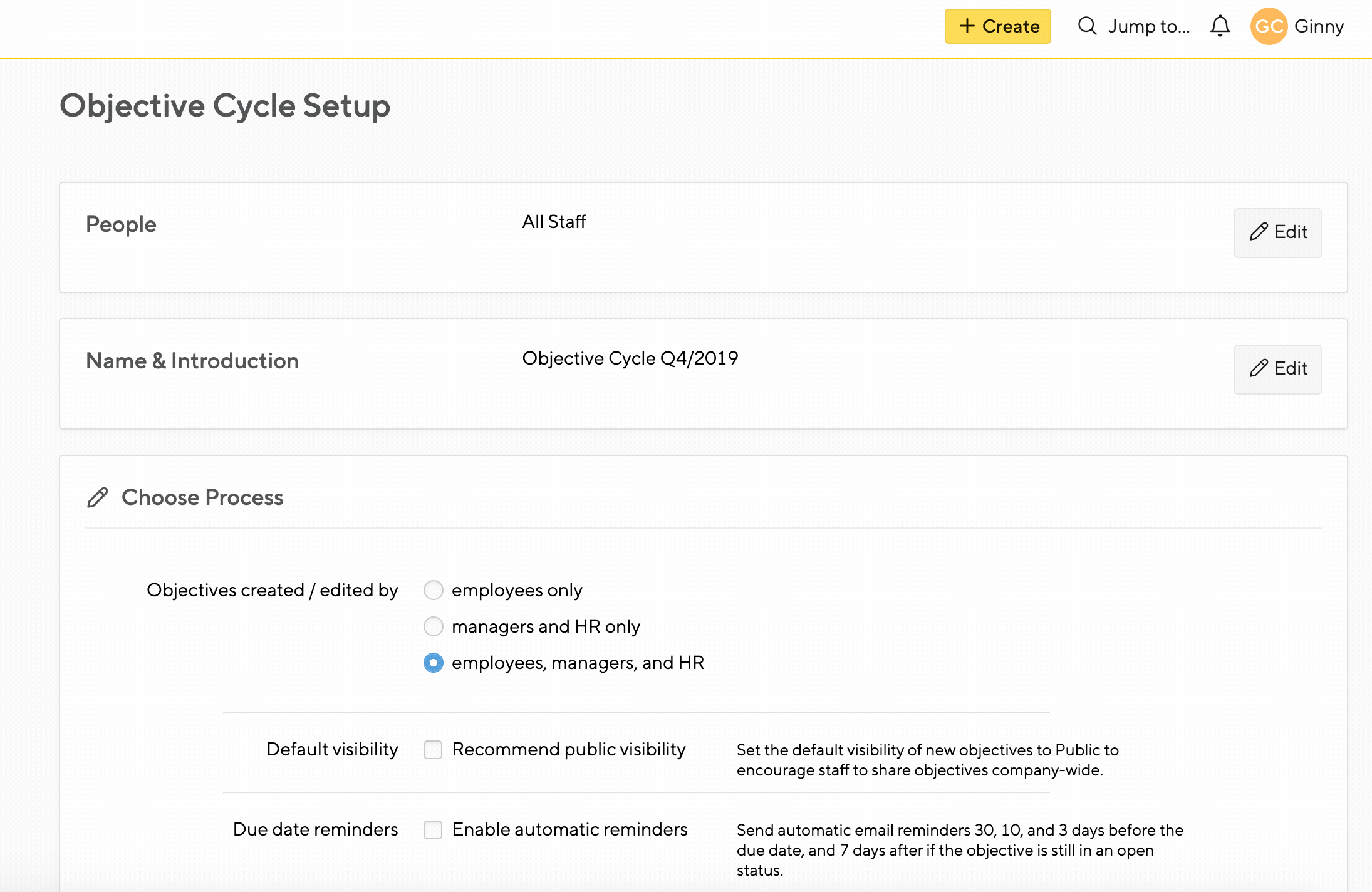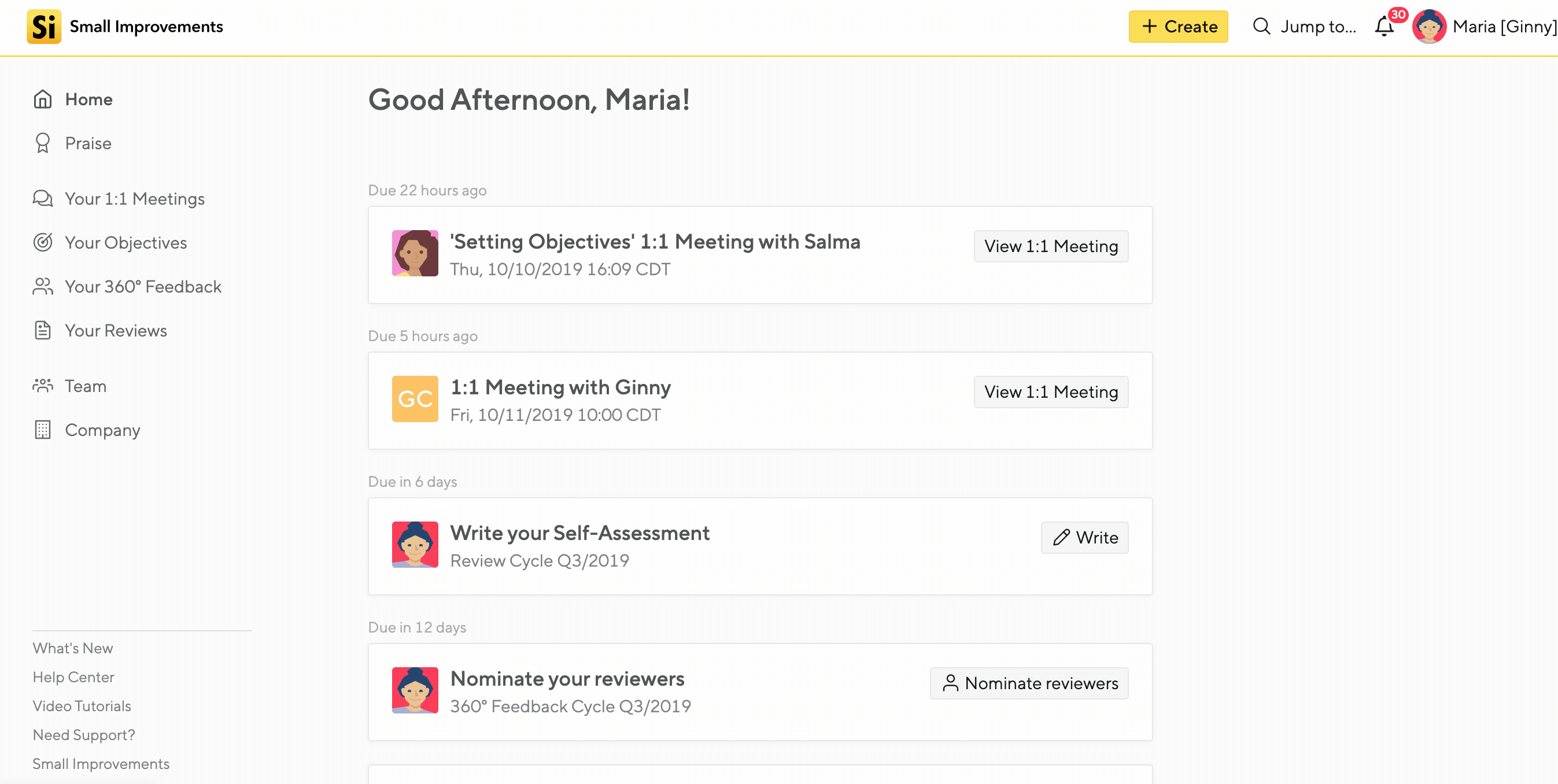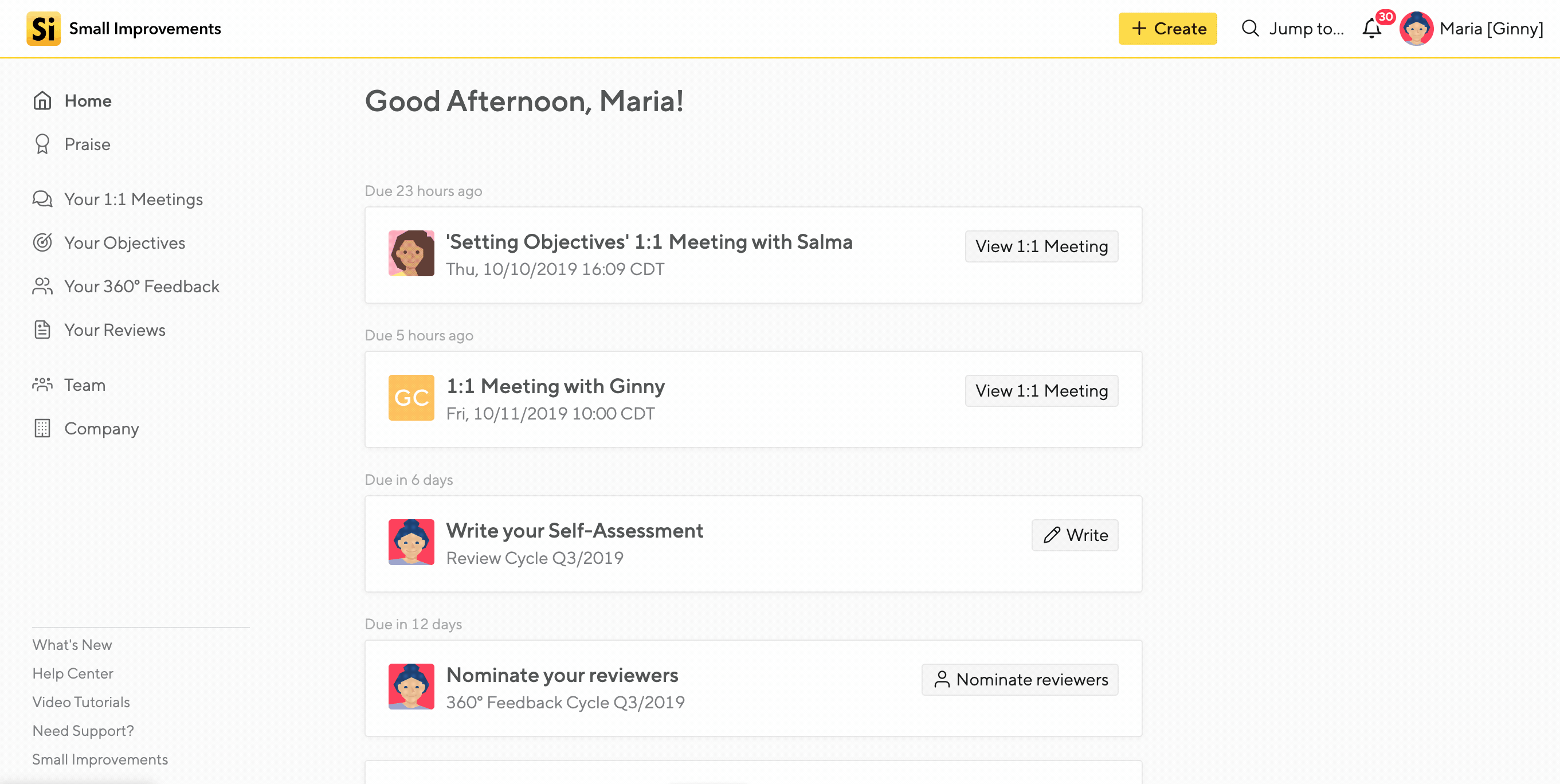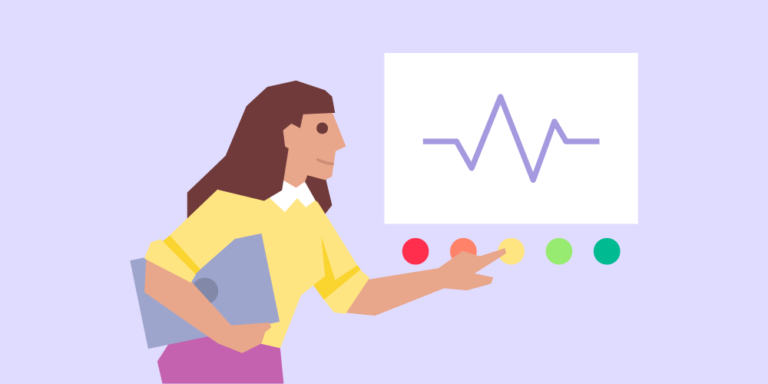
Collaborate and Deliver: Objective Alignment and Key Results
When HR administrators and their mangers are thinking of implementing a goal setting process for their teams, they often have two important considerations.
Table of Contents
When HR administrators and their mangers are thinking of implementing a goal setting process for their teams, they often have two important considerations:
- How do employees align their objectives around broader company priorities?
- How can staff be as specific as possible when outlining their targets?
We got answers!
Alignment through Categories
We tackle lightweight goal alignment via the ability customize categories by each new cycle, instead of globally locking categories for all objective cycles your HR Admins create as was once the case in an earlier iteration of the tool.
With this enhancement- HR Admins can now create cycles centered around company priorities, and by customizing the cycle’s categories to cross reference these priorities- Managers and their teams can align their goals to these “bigger” company directives.
It works even better if HR Admins utilize the introduction field of a cycle to detail (or hyperlink to) the company priorities.
Admins or the top of the org structure could even create a company goal within the tool (they or the CEO would “own” the goal), make it publicly visible to all, and then hyper link to that goal from the cycle introduction- Thus keeping users in the platform when communicating broader company priorities.
How an HR Admin can enable:

What it looks like when setting an objective:

And check how easy it is to see how your company’s objectives all fit into the larger picture:

Deliverables using Key Results
Oh but wait! There is more. We also provide the ability break objectives down by achievable components, making completing a goal more actionable and measurable.
Key Results are on by default- If, as a HR Admin, you’d like to disable them- Just uncheck the box.
Great, but what does this look like?
Creating and working on an Objective with Key Results:

In Summary
Using these options, especially both in conjunction with each other, is an excellent way to get your team to opt-in to a goal setting process.
We hope it helps drive engagement and productivity at your company! If you have any questions or feedback, please let us know. We welcome both!
Discover more resources

Struggling with retention? Try regular check-ins
There’s a simple way to improve employee retention and satisfaction in your org, and that’s having regular check-ins.

Are true OKRs worth the hassle?
Objectives & Key Results (OKRs) have helped numerous tech companies become profitable. They’re also notoriously hard to implement. So we decided to take a deeper look into whether OKRs are worth the investment.

9 tips for creating a remote working culture
Giving employees the freedom to work remotely is something we value at Small Improvements. So we asked our seasoned remote pros for their best tips.

You’re not too busy for 1:1 meetings
No excuses! Regular check-ins with your employees are essential to helping them realize their potential.

The 10 Best Performance Management Tools in 2025 (And How to Choose the Right One for Your Team)
Why companies are rethinking performance right now Performance management has come a long way from the once-a-year review and vague development goals. Many teams are moving away from rigid processes and starting to ask a more useful question: how can we help employees grow while still hitting goals as a company? For most, that means…

Pulse surveys: An essential guide to real-time employee feedback
Thinking about running pulse surveys? Read these tips for getting frequent employee feedback to improve your employee experience.